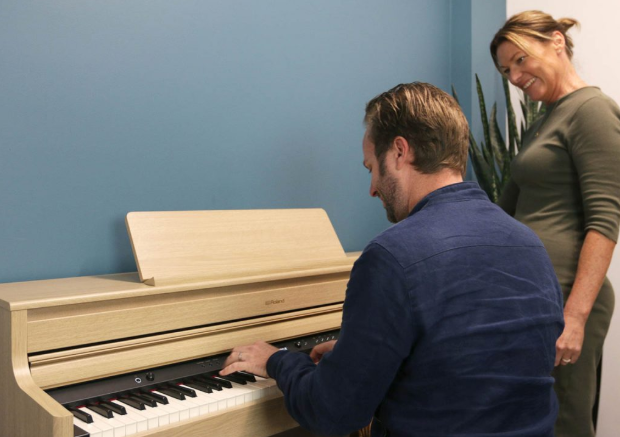
If you make music on the move, a portable keyboard MIDI controller is the easiest way to capture ideas anywhere—on the couch, on a train, in a dorm, or at a tiny desk squeezed between a laptop and a coffee mug.
The trick is choosing something small enough to live in your bag but capable enough to play real parts, control your DAW, and learn new songs without friction. This guide cuts through the noise with seven mini form factors that cover most use cases—ultra-compact 25-key boards, slim 32–37-key options, wireless units, foldables, pad-and-keys hybrids, and one smart, modular pick that doubles as a learning tool and a stage-ready sketchpad.
We keep brand mentions light and focus on what matters for portable MIDI keyboard performance: feel, latency, travel size, and the stuff you’ll actually use.
“Portable” isn’t just about weight on a spec sheet. For a MIDI keyboard portable enough to take everywhere, three details matter:

Below, each “pick” is a category—so you can understand the form factor and compare options without brand overload. One slot highlights a smart, modular choice that aligns with PopuMusic’s learning-plus-creating philosophy.

If you want a portable keyboard MIDI controller that doubles as a fast-learning tool, this is the sweet spot. The main 29-key board stays tiny enough for a backpack; the optional expansion adds 24 keys when you want two-hand range.
LED follow-lights guide melodies, and a chord pad lets you comp one-tap harmonies while you sing or sketch beats. When you’re done learning, it flips into midi portable keyboard mode for your DAW with Bluetooth or USB-MIDI.

The ROLI Piano M redefines the portable smart keyboard. Every key glows with full-color RGB lighting that guides notes and chords, while ROLI’s MPE (Multi-Dimensional Polyphonic Expression) technology adds per-note touch, slide, and pressure control for expressive play.
It connects wirelessly or by USB-C, and you can snap multiple units together to expand the range—making it both a learning keyboard and a pro-level MIDI controller. The ROLI Learn app includes light-guided lessons, games, and song tutorials that track progress in real time.

This is the classic portable MIDI keyboard size: 25 mini keys, octave buttons, pitch/mod via touch-strip or mini wheels, and a single USB-C cable to your laptop or tablet. It’s the controller you can toss into a sling and forget it’s there—until a bassline hits you on the subway.

A midi keyboard portable in this size gives you just enough keys for right-hand melody plus occasional left-hand bass notes. Body length typically stays under 50 cm, so it still fits many backpacks.

If you split time between practicing and producing, 37 keys is a sweet, still-portable middle ground. You can map two-hand patterns in C/G/F without excessive octave jumps, and the longer chassis keeps the action more stable.

Low-latency BLE-MIDI makes a portable keyboard with MIDI feel liberating: set the board on your lap, pair to a tablet or phone, and record sketches without a cable spaghetti. Battery life on most wireless minis lasts multiple sessions, and many can still plug in via USB when you want zero latency and power from your laptop.

If your songs start with drums, a hybrid portable keyboard MIDI controller puts 8–16 pads above or beside the mini keys. You can finger-drum on the pads, then jump to basslines and chords without swapping gear. Transport and encoder knobs often come along for quick volume, filter, or pan tweaks.

Foldables collapse into a fraction of their full length, turning a 49-key or 61-key layout into a travel-friendly rectangle. Many send class-compliant USB-MIDI, some add Bluetooth. If you travel with luggage more than a backpack, this is a clever way to get real key count without constant octave switching.
Compromises: folding hinges can add noise or flex; not all foldables feel consistent across the break. That said, for hotel-room practice or mobile arrangements, they’re shockingly useful.

Choosing the “best portable MIDI keyboard” is really about matching your use pattern:
Feature checklist for a portable keyboard MIDI controller:
A small controller isn’t just “for travel.” With the right routine it becomes your daily practice partner:
For pure portability, 25 works. For more comfortable two-hand sketches, 32–37 hits the sweet spot. If you need real range but still travel, a modular or foldable option is smart.
It depends on device/OS. BLE-MIDI can feel great for practice and sketching; for tight timing or live takes, use USB.
No—but they feel different. Keep wrists neutral and use light touch. If you’re learning piano technique, consider a modular path that can add keys when you’re ready.
Nice to have, not mandatory. For most travelers, reliable velocity and octave switches matter more than extras.
A great portable keyboard MIDI controller disappears into your routine. It’s light enough to carry daily, quiet enough to play late, fast enough to pair, and musical enough to capture ideas without fighting the keys.
If you want a single device that covers learning, sketching, and scaling up later, the modular 29-key mini with LED guidance and chord pad is the most complete choice right now—compact today, expandable tomorrow, and friendly for both beginners and producers.
Leer más

Best ways to learn the piano as an adult starting out?
Busy life, big goals, not much time—that’s the adult learner’s reality. The good news? You can build real piano skills with a focused beginner piano plan for adults that fits into 10–30 minutes a d...

Guide to Choosing a Travel-Sized Piano
Travel changes how you practice. Hotel rooms, Airbnb living rooms, campus lounges, long weekends—none of them are built for an upright. That’s where a travel keyboard piano earns its keep. The righ...